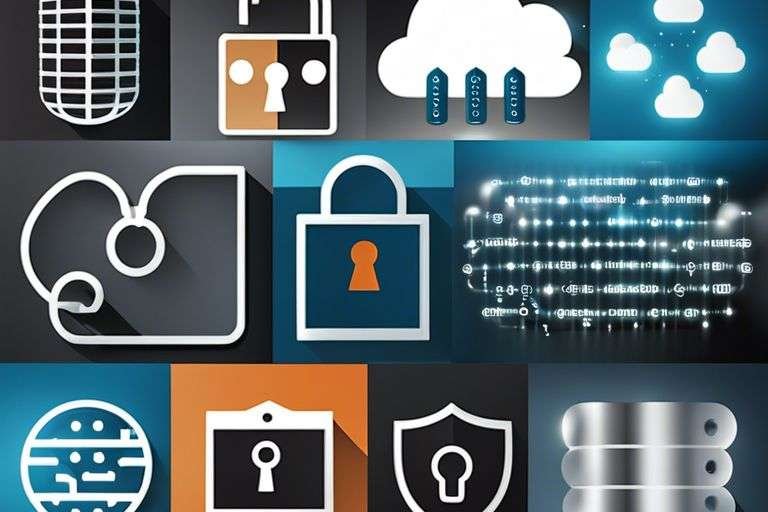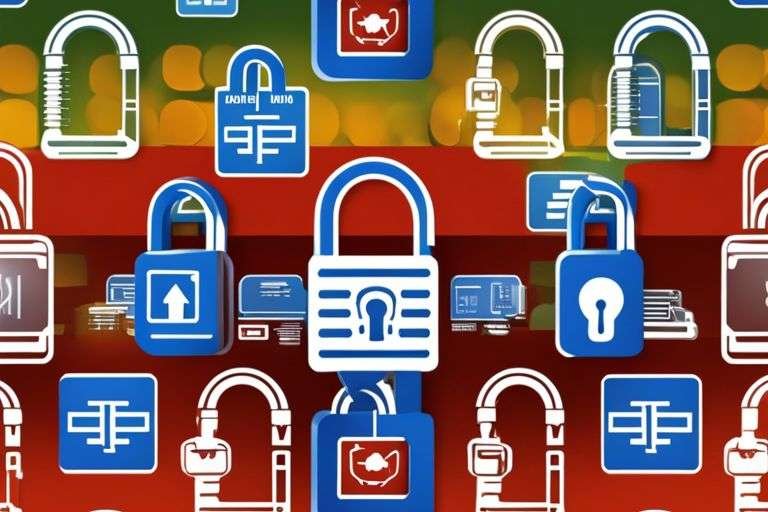Many businesses are increasingly turning to Software as a Service (SaaS) solutions to streamline operations and enhance productivity, but the security risks associated with these platforms cannot be overlooked. In a landscape where data breaches loom large, it’s critical that you examine factors such as data privacy, compliance requirements, and vendor reliability before making your choice. This guide aims to equip you with the insights to navigate the complexities of SaaS security, ensuring that your decisions protect not just your data, but also your organization’s integrity.
Key Takeaways:
- Data Privacy: Ensure that the SaaS provider complies with data protection regulations, such as GDPR or HIPAA, to safeguard sensitive information.
- Access Control: Evaluate the authentication and authorization mechanisms in place to prevent unauthorized access and ensure that users have the right level of permissions.
- Service Reliability: Assess the provider’s security measures against potential threats, including their incident response strategy and evidence of system uptime and data backup protocols.
Data Security Risks
The realm of Software as a Service (SaaS) solutions presents formidable challenges in terms of data security. As organizations increasingly rely on these platforms to manage sensitive information, understanding the associated risks becomes imperative. For a comprehensive overview, you might find it beneficial to read more about the Top 7 SaaS Security Risks (and How to Fix Them). In this chapter, we will examine into two significant data security risks: unauthorized access and data breaches.
Unauthorized Access
One of the most concerning aspects of data security in SaaS environments is the potential for unauthorized access. This risk arises when individuals gain access to systems and information without the necessary permissions. This can occur due to weak passwords, inadequate authentication protocols, or even phishing attempts targeting your employees. As a result, you must ensure that your SaaS provider has robust access controls and regularly audits their security measures.
Furthermore, the implementation of multi-factor authentication (MFA) can significantly mitigate this risk. MFA adds an additional layer of security by requiring users to provide two or more verification factors to access their accounts. Consequently, evaluating the authentication processes of your SaaS vendor is a crucial step in safeguarding your organization’s data.
Data Breaches
Breaches are another critical concern when considering a SaaS solution, as they can have devastating consequences for your organization. Data breaches occur when unauthorized individuals access confidential data, leading to the potential theft of sensitive information such as customer records, financial data, or intellectual property. When dicking out a SaaS provider, it is imperative to investigate their history regarding data breaches and their preparedness in responding to such incidents.
It is vital to understand that the ramifications of a data breach extend beyond immediate financial losses; they can also damage your reputation, erode customer trust, and lead to legal implications. To mitigate this risk, ensure your SaaS vendor employs advanced encryption techniques and has a clear incident response plan in place. By doing so, you protect not only your data but also the long-term interests of your organization.
Compliance and Regulation Risks
You are navigating a complex landscape when choosing a SaaS solution for your business. One critical aspect to consider is compliance and regulation risks. With technology evolving rapidly, the need for adherence to industry standards and regulations has never been more pressing. A failure to comply with these regulations could result in significant legal penalties, damage to your reputation, and ultimately, a loss of customer trust. Thus, understanding the regulatory environment in which you operate is vital to making an informed decision about your SaaS provider.
Industry-Specific Regulations
With each industry comes its own set of regulations that dictate how data is managed, stored, and processed. For example, if you’re in the healthcare sector, you must comply with regulations like HIPAA, which protects patient information. Similarly, businesses handling financial data need to follow PCI DSS guidelines to ensure the security of payment transactions. By choosing a SaaS solution that is well-versed in your industry-specific regulations, you can mitigate the risk of compliance violations, thereby protecting your organization from potential financial and reputational harm.
International Compliance
An increasingly global market means you have to be aware of international compliance standards as well. If your SaaS solution operates across borders, you need to understand regulations like GDPR (General Data Protection Regulation) in Europe, which imposes strict data protection mandates. Non-compliance can lead to hefty fines, making it crucial for you to ensure that your chosen provider has the necessary compliance frameworks in place. Furthermore, international compliance can be even more complex if your user base spans multiple regions, each with distinct legal requirements.
Risks associated with international compliance are significant and should never be underestimated. If your SaaS provider fails to comply with international laws, you could face severe financial penalties and damage to your organization’s credibility. Additionally, the perception of your brand could suffer if customers feel their data is at risk. Therefore, ensuring that your SaaS provider is compliant with international standards is vital for both risk management and fostering customer trust.
Vendor Lock-In Risks
Once again, as you navigate the landscape of Software as a Service (SaaS) solutions, it’s crucial to consider the potential security risks associated with vendor lock-in. This is a situation where you become overly dependent on a single provider, making it difficult to switch to another service. The implications of such dependence can be significant, especially in a dynamic technology environment where flexibility and agility are paramount.
Dependence on a Single Provider
With vendor lock-in, your business becomes tied to the performance, pricing, and policies of a single provider. This lack of diversity can lead to problems, especially if the provider faces downtime or their services become subpar over time. Imagine relying on a vendor that suddenly raises prices or changes their terms of service; you’ll find yourself cornered, with limited options to mitigate risks or reduce costs.
Moreover, such dependence can stifle innovation within your organization. Should the vendor’s roadmap not align with your evolving needs, you might be forced to compromise on necessary features or capabilities. Eventually, your organization could miss out on superior technologies offered by others in the market, holding you back from reaching your full potential.
Difficulty in Switching Providers
Switching to a different provider can be a daunting challenge. The reality is that many SaaS solutions are designed to integrate tightly with your workflows, so moving away from them often entails significant effort and investment. You may have to deal with data migration issues, where transferring large volumes of data can lead to potential data loss or security breaches if not handled correctly.
Providers often create ecosystems that are hard to disentangle. They may use proprietary technologies that make exporting your data complex or cumbersome. Additionally, there could be a lack of interoperability with other tools, which means you’ll have to invest resources in new integration processes. Ultimately, the fear of incurring high costs, operational disruptions, and even potential security violations can trap you in a cycle that discourages you from considering alternatives.
Integration and Interoperability Risks
Keep in mind that choosing a SaaS solution requires careful consideration of how it will integrate with your existing systems. The risks associated with integration and interoperability can significantly impact your organization’s efficiency and security. If the SaaS solution you select is not compatible with your current software environment, you may encounter disruptions that hinder your operations. It’s vital to assess how the new software will communicate with your existing systems and whether any adjustments are necessary to ensure smooth integration.
Incompatibility with Existing Systems
With an ever-evolving tech landscape, the possibility of your chosen SaaS solution being incompatible with your existing systems is a very real concern. If the software does not seamlessly align with your established infrastructure, you might face an array of issues, from lost data to increased administrative burden. This incompatibility can lead to inefficiencies and even create security vulnerabilities, as you may need to implement temporary fixes that expose your organization to risk.
Integration Complexity
One of the paramount challenges during integration is the complexity involved in unifying various systems and ensuring they work cohesively. Depending on the architecture of your existing systems and the SaaS solution you choose, the integration process could require significant time and resources. This can lead to unforeseen costs, project delays, and undue stress on your IT team, particularly if specialized knowledge is required to navigate integration hurdles.
This integration complexity not only diverts your team’s focus but can also create potential security holes in your setup. If not handled meticulously, the connections established between your existing systems and the new SaaS application might introduce vulnerabilities, as data travels through various pathways unprotected. Therefore, it is crucial to develop a clear strategy for integration that considers both the functionality and the security measures needed to protect sensitive information throughout the process.
Scalability and Performance Risks
For businesses looking to adopt a Software as a Service (SaaS) solution, understanding scalability and performance risks is crucial. As your organization grows, so do the demands on your software. Insufficient resources can lead to performance bottlenecks, which may hinder your ability to serve customers effectively. When evaluating SaaS providers, you need to ensure that their infrastructure can handle increased usage without significant slowdowns. Failure to do so can result in dissatisfied customers and missed revenue opportunities.
Insufficient Resources
On the surface, it may appear that a SaaS solution fits your current needs, but you must consider future growth. If the provider does not have adequate resources to scale alongside your organization, you could face limitations that restrict your operations. This might manifest as slow response times or inadequate support during peak usage periods. The repercussions can extend beyond immediate performance issues; they can affect your entire business strategy, forcing you to reconsider your SaaS provider sooner than planned.
Unplanned Downtime
Insufficient infrastructure can also lead to unplanned downtime, which is not just a minor inconvenience. It can have a detrimental impact on your business. Unreliable SaaS providers may struggle to maintain consistent uptime, which is critical for your operations. Every moment your services are down translates to lost productivity, reduced customer satisfaction, and ultimately, potential revenue loss. Choosing a provider with a proven track record in handling traffic spikes and maintaining high availability becomes crucial.
It is crucial to recognize that although unplanned downtime can happen to any service provider, the frequency and duration of these outages matter immensely. If it becomes a recurring issue, it could signal deeper problems within the SaaS solution, such as inadequate resources or poor management practices. Taking the time to assess the provider’s historical performance and user reviews can provide valuable insights into their reliability. Your business’s operational stability largely hinges on the performance and availability of the software solutions you choose to invest in.

Support and Maintenance Risks
Unlike traditional software solutions, adopting a Software as a Service (SaaS) model often means you rely on the vendor for support and maintenance. This reliance can introduce specific risks that require careful consideration. Effective support and maintenance are critical factors in assuring the integrity and security of your SaaS solution, as even small hiccups in these areas can spiral into larger security vulnerabilities.
Inadequate Customer Support
Support is your first line of defense when issues arise with your SaaS application. If the customer support provided by the vendor is inadequate, you may find yourself facing extended downtimes or unresolved security issues. This lack of responsiveness can significantly impact your operations, exposing sensitive data to potential breaches and creating a sense of uncertainty around your data integrity.
Moreover, the risks associated with inadequate customer support can extend beyond immediate resolution times. When a vendor fails to provide sufficient support, it may lead to disruptions in service, negatively impacting your users’ experiences and damaging your business reputation. Therefore, it is vital to assess the level of customer support a SaaS provider offers before you commit.
Lack of Regular Updates
For any software solution, regular updates are crucial for addressing security vulnerabilities and ensuring optimal performance. Without consistent updates, your SaaS application can become an easy target for cybercriminals seeking to exploit outdated security protocols. Vendor complacency in this area not only risks the safety of your data but may also lead to regulatory compliance issues, potentially putting your organization at legal risk.
Maintenance of your SaaS solution requires diligent oversight from the provider. A lack of regular updates can lead to an accumulation of unpatched vulnerabilities that hackers can easily exploit, turning your investment into a ticking time bomb. You should always inquire about the vendor’s update schedule and ensure they have a transparent process for rolling out security updates and performance enhancements. Regular updates not only keep your software secure but also enable you to leverage the latest features and improvements, enhancing your overall user experience.
To wrap up
With these considerations in mind, it becomes clear that choosing a SaaS solution involves a delicate balance between convenience and security. As you navigate through various options, you must be keenly aware of potential risks, such as data breaches, compliance issues, and the reliability of the service provider. Engaging with your vendor about their security protocols and understanding their data handling practices can empower you to make informed decisions that protect your business interests.
Ultimately, the security of your SaaS solution hinges on your proactive approach. You must take the time to assess your unique requirements and anticipate potential vulnerabilities that could impact your organization. By prioritizing security alongside functionality, you not only safeguard your data but also build a foundation of trust with your clients and stakeholders. In a rapidly evolving digital landscape, vigilance is your best ally in ensuring that your SaaS solution remains a secure and effective tool for your business purposes.
Q: What are the primary security risks associated with using a SaaS solution?
A: When choosing a SaaS solution, there are several primary security risks to consider. First, data security is a significant concern, as your information will be stored remotely in the cloud. Ensure that the provider employs strong encryption methods both in transit and at rest to protect sensitive data. Second, compliance risks must be examined; the SaaS vendor should comply with industry-specific regulations such as GDPR, HIPAA, or PCI DSS. Lastly, user access management poses a risk; it’s crucial to manage permissions properly to prevent unauthorized access to your data.
Q: How can I assess the reliability of a SaaS provider’s security measures?
A: To assess the reliability of a SaaS provider’s security measures, start by reviewing their security certifications and compliance standards. Look for certifications like ISO 27001, SOC 2 Type II, or other relevant security frameworks that indicate a commitment to data protection. Additionally, evaluate their incident response policies and the transparency of their security practices, such as regular vulnerability assessments and penetration testing. Furthermore, investigate customer reviews and case studies to gather insights on how the provider has managed past security incidents.
Q: What key features should I look for in a SaaS solution to enhance security?
A: To enhance security when selecting a SaaS solution, consider looking for key features such as multi-factor authentication (MFA), which adds an extra layer of protection beyond just passwords. Additionally, inquire about data encryption practices, both for storage and data transmission. A robust user management system is crucial for controlling access to sensitive information, along with regular security updates and patch management by the SaaS provider. Lastly, ensure that the solution offers comprehensive logging and monitoring capabilities, allowing for real-time detection of any unusual activity or breaches.







